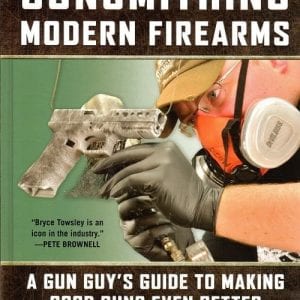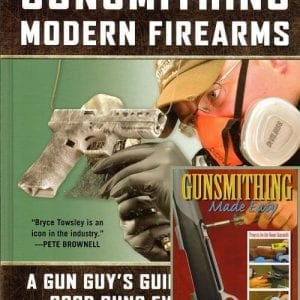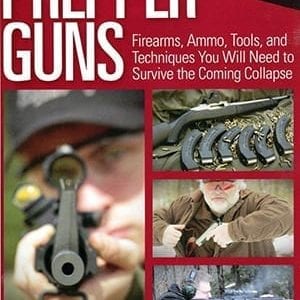Ethical Long Range Hunting is About a Lot More than Just Hitting the Critter
There are several considerations, but first and foremost is your skill level. Most people will not be honest about that. If you are one of the rare breed that believes in discovering the truth, try shooting at targets at unknown long ranges under a wide variety of conditions. Use a six inch bulls-eye, and make it your goal that every bullet fired must hit that circle. It will take a while, several range sessions over several days, but two things will emerge. One is that sooner or later you will realize the maximum range where you can hit that six inch target every single time and it will probably be a lot shorter than what you expected when you started. The second thing is all that shooting will have built some skills and extended the maximum range farther than it was the day you started.
One huge factor is your rifle. The more accurate the rifle, the longer the distance you can shoot with it. In theory, one MOA rifle will hold all its shots on a six inch target to 600 yards. But a two MOA rifle can only be counted on to do that at 300 yards. Of course that’s just the rifle and it assumes you can break every single shot perfectly, which is an impossibility in the field. So your true maximum range will be much shorter. But one solid truth is that the more accurate your rifle, the longer your maximum distance will be.
With the ultra-accurate Jarrett rifle I used on a hunt this fall, I was keeping my shots on target at 800 yards. But, after I factored in field shooting I set my limit at 600 yards. I could hold ½ MOA groups from the bench, but would be lucky to do double that from field positions, which is 6-inch groups. Could I hit a deer’s kill zone at 800 yards? Probably. Could I do it every time? Probably not. However, I was confident that, with a solid shooting position, I could at 600 yards. Considering that’s double my decades old self-imposed limit for shooting at unwounded big game, that is significant. To hedge my bets a bit more, I decided that 500 was my personal limit.
Another often neglected factor is your cartridge’s performance. It’s one thing to hit a critter, but you need to make sure of a clean kill. Much is made today by some people who do not fully understand terminal ballistics, about how the new class of hunting bullets have changed the game. They are right to a point. Bullets like the Barnes TTSX have far better and more predictable terminal performance than the old cup and core bullets that were in common use a generation or two ago. But they still must be driven with enough power to do their work.
One of my critics likes to brag about using a 6.5 Creedmoor on elk at 700 yards and got mad when I called it slob hunting. First off, let me establish that I like this cartridge. Just a couple of days ago I received a long awaited, very expensive, custom long range precision rifle chambered for the 6.5 Creedmoor. I could have selected any cartridge I wanted when I ordered this rifle. I chose this one. I plan to use the rifle for long range shooting and competition and it’s a great cartridge for that use. (I have another, lighter weight 6.5 Creedmoor for hunting.) The 6.5 Creedmoor can almost duplicate the trajectory curve of the .300 Winchester Magnum, making long range hits possible with far less recoil to deal with. When shooting multiple times at long range targets, recoil can have a cumulative effect and can induce fatigue that affects your performance. So reducing recoil in a target gun is a good thing. But you must remember that while the bullet strikes the target at long range on a similar path to the .300 Winchester, it does not strike with the same amount of force. For all its flaws, the best tool we have today to measure a bullet’s ability to do work is energy. That is particularly true with long range impacts.
Let’s look at the .300 Winchester and the 6.5 Creedmoor, both with Barnes Triple Shock X-bullets at 2,960 ft/s muzzle velocity. The .300 has a 180-grain bullet while the 6.5 had 120-grain bullet.
The .300 Winchester has 3,503 foot-pounds of energy at the muzzle, while the 6.5 Creedmoor has 2,335 foot-pounds. At 500 yards the .300 Winchester has 1,828 foot-pounds of retained energy while the Creedmoor has dropped to 988 foot-pounds. At 700 yards the .300 Winchester is down to 1,371 foot-pounds and the 6.5 Creedmoor has only 670 foot-pounds. Unless the bullet you are using has a nuclear warhead, 670 foot-pounds is not enough energy to reliably kill an elk with any rifle bullet. Sure, it may kill him, but it just as well may fail. In fact, with the velocity down to 1,580 ft/s for the 6.5 Creedmoor it is below the lower impact velocity threshold needed to insure positive expansion with most of the new super bullets.
The bottom line is simple: The new generation of super bullets are only as good as the energy and velocity driving them.
Monothlitic expanding bullets like the Barnes and all the copy cats are the best choice, but you must remember that they depend on plenty of impact velocity and energy to work effectively. So, an ethical long range hunter will always factor that into the equation.

It’s not enough just to hit a critter at long range, you must also use a bullet with enough energy to make a clean kill.
On the whitetail hunt mentioned earlier, I was using a .300 Jarrett. If you use the long accepted theory that a rifle bullet should have 1,000 foot-pounds of energy on impact for deer, this cartridge is capable out to 860 yards, well beyond any distance I care to shoot at a deer. But if you are hunting elk where the minimum standard is said to be 2,000 foot-pounds, it falls below that threshold around about 530 yards. In both cases, these are very long shots anyway.
But for the sake of argument, what if you were using a .308 Winchester? With that same Barnes 180-grain TTSX bullet and a muzzle velocity of 2,550 fps it drops below 1,000 foot-pounds of energy at 525 yards. It crosses the 2,000 foot-pounds threshold at just 180 yards.
The 6.5 Creedmoor, drops below 2,000 foot-pounds at 100 yards and below 1,000 foot-pounds at 490 yards.
The point is simply this, ethical long range hunting not just about the ability to hit the animal; it’s also about delivering a high quality bullet with enough juice to make a clean kill every single time.











